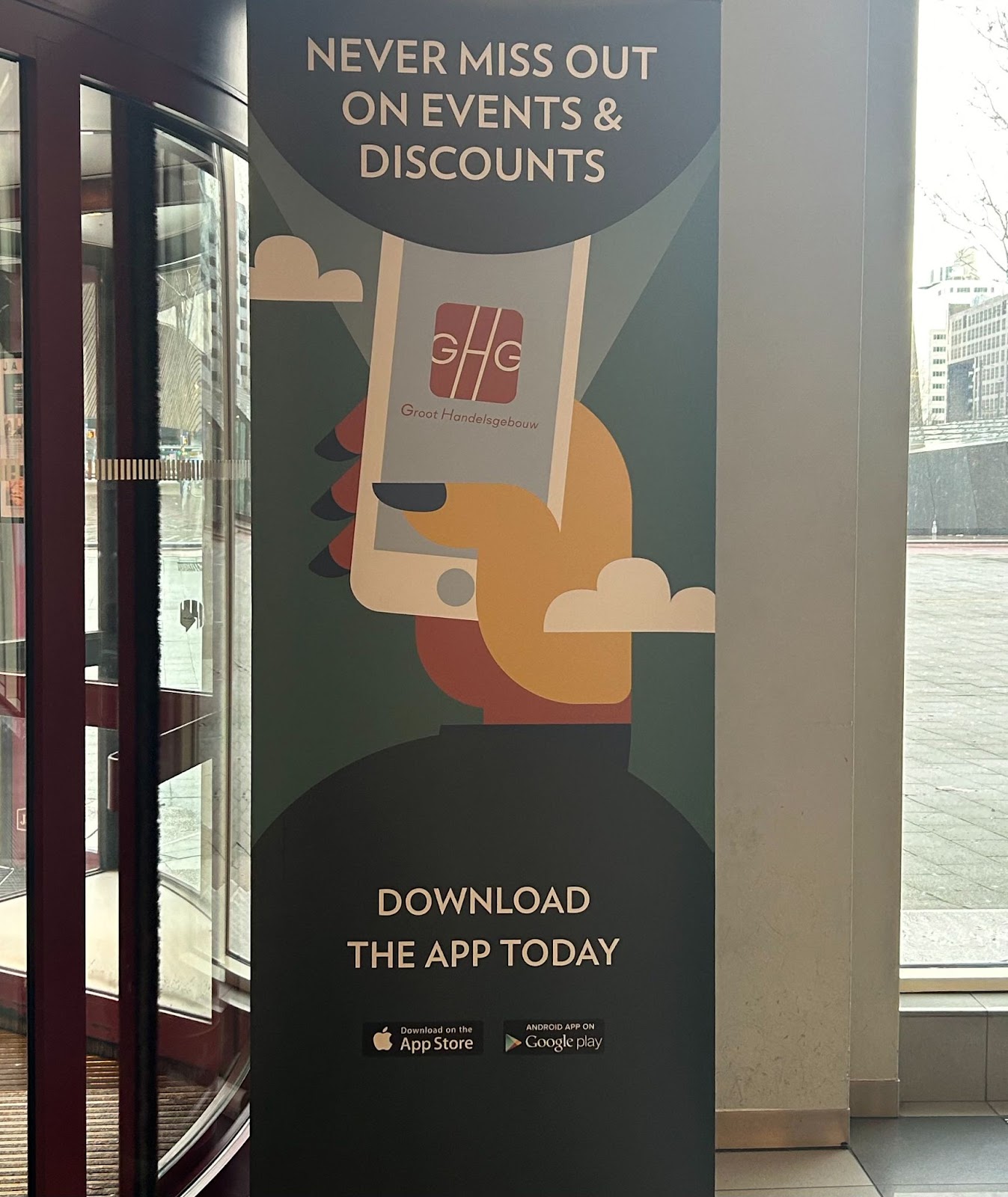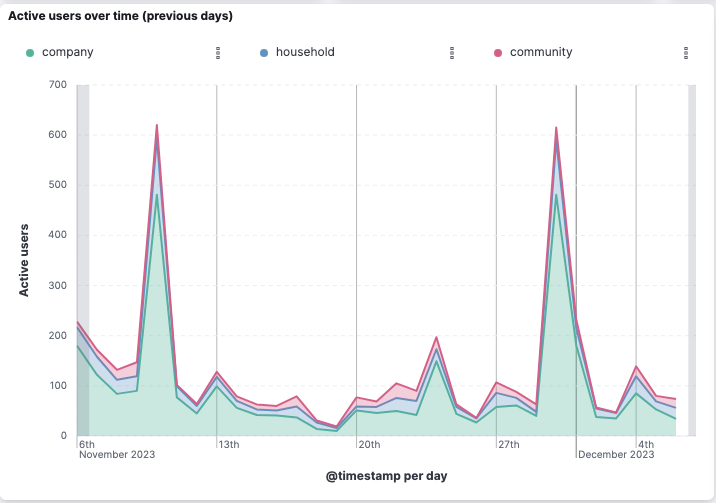I remember my first week at Chainels, getting slightly lost in the labyrinthine building where the office is located. There’s hundreds of other companies here, and there always seems to be something going on.
However, as far as I could see, I had no way of knowing beforehand what the events were, and when they were taking place.
Moreover, the building was littered with spacious and themed meeting rooms. They were everywhere but, again, I had no idea how to book them.
It wasn’t until a couple of days later that a colleague introduced me to the building's tenant experience app-it was like a revelation. All the building’s events, features and amenities suddenly opened up to me, and I could experience the space for all it had to offer.
This is the importance of user adoption.
But what is user adoption?
User adoption refers to the process and extent to which individuals embrace and integrate a new product, service, or technology into their routines or workflows.
It measures the success of introducing something new by assessing how many users or customers actively engage with, understand, and use the offered solution.
As a metric, it indicates the value and effectiveness of strategies employed to encourage its uptake within the intended user base.
In our case, that user base is tenants in residential, commercial, office or mixed use assets.
User adoption strategies for real estate assets
Raise tenants’ awareness of the platform
Ensuring widespread awareness among tenants regarding the platform's features and benefits is the cornerstone of successful user adoption. But to get it right, you need a robust end-user adoption strategy.
The first phase of any successful user adoption strategy is getting your tenants to understand the immediate benefits of using a tenant experience app. You can do this in a number of ways.
Onboarding and Orientation Sessions
Host orientation sessions or workshops during move-ins or lease renewals to introduce the tenant experience app's features.
Provide hands-on guidance to navigate through the app, emphasising its various functions related to maintenance requests, communication channels, financial tracking, and energy consumption reporting.
Make sure that an introduction to the the tenant app is a part of the tenant onboarding process. Include the following…
For residential buildings:
- How the app works and why it is important
- How to use the app in an enjoyable way, and ground rules for engaging with it.
- Have a ''for dummies'' guides in a tenants’ onboarding guide that they can refer back to.
For commercial buildings:
- Make sure that commercial tenants introduce the tenant app in their employee onboarding.
- Ensure that employees are onboarded by sending monthly reminders or include adoption as a clause in contracts.
Get creative with launching and promoting your app
To drive user adoption from the get-go, think of ways to grab tenants’ attention, create a buzz and properly incentivise them to start using your app. Some strategies could include…
- Competitions—Launch competitions where tenants can win enticing prizes—from relaxing massages and book vouchers to flight tickets or exciting day trips.
- Perform stunts—Big stunts forge memories and can make tenants feel as if they’re part of something. One Chainels user, Fuzer by Amvest, launched their tenant experience app by breaking the world bubble-blowing record. They named the event “Join the Bubble”, cleverly using wordplay to create excitement around joining their digital community.
- Throw a party—Organise captivating launch events paired with vibrant parties that make a lasting impression. The energy and excitement generated during such events can leave a lasting impression.
- Distribute freebies—Another smart way to get tenants to download your app is by giving away freebies during onboarding. This can be anything from notepads and key-rings to water bottles to candy - include QR codes and calls to action on these items to encourage app downloads.
- Leverage content—Content like video can be a powerful way to spread your message, showcase your users and incentivise new tenants to download your app.
- Seasonal Re-Activation Events—In assets with frequent tenant turnover, organise seasonal re-activation events. Whether it's winter with glühwein and pretzels or summer with refreshing smoothies, these events reignite interest and engagement.
Assign an app ambassador
Recruit enthusiastic tenants as "app ambassadors" who can advocate for its use within the community.
These ambassadors can host small sessions, share their positive experiences, and offer peer-to-peer guidance on maximising the app's benefits.
Use posters and signage in main thoroughfares and communal spaces
Identify areas within your property where tenants are most likely to notice communications e.g. entrances, walkways, shared spaces, elevators.
Design a poster with a clear call to action to download the app alongside a list of USPs about how tenants can benefit from the app. Also include a QR code so tenants can download it directly.

Depending on the placement of the poster, you could get creative with the messaging. For example, a poster in a restroom could say something like, “would you like to have your laundry done while you do your work? Scan the QR code and book your laundry cleaning service in the app.”
If you’re in an office with a canteen, you could place a poster where people queue for food with a message like, “Want to skip the queue? Order your sandwich/coffee in the app and pick it up."
Pitch your app as a must-have for a positive tenant experience (because it is)
A tenant experience app can give your tenants access to functions and amenities they wouldn’t have otherwise - make sure they’re aware of that fact.
For example, if you have an app that integrates with other software, that’s a huge benefit for tenants.
It means they can not only use the app for communications, issue reporting and booking amenities, but also for keyless access, parcel management and in-app payments. The opportunities are endless and tenants should know about it.
Since often the only way for tenants to book amenities, request maintenance, attend events, access additional software is through your tenant experience app, let them know that they’re missing out without it!
Set actionable and measurable goals
Establishing clear, achievable, and measurable goals is imperative to gauge the success of any user adoption strategy.
Setting clear goals and defining metrics to measure them allows for a more focused approach. Some metrics might include a certain percentage increase in platform usage within a specified timeframe or an increase in utilisation rates of particular product features.
Regularly assessing these metrics enables refinement of strategies to align with evolving user needs and preferences.
Using Chainels, for example, managers can track the amount of activated profiles and how active they were within particular timeframes.

You can also use the app’s statistics module to track user engagement over time. This helps to pinpoint the outcome of user adoption strategies like signage, onboarding workshops or incentivisation, and find out what works, and what doesn’t.

Collect feedback and act upon it
Feedback forms and tenant satisfaction surveys are an integral part of the user adoption process. Creating avenues for tenants to provide feedback fosters a sense of involvement and ownership.
If you use a tenant experience app to collect feedback, which you then implement to the benefit of tenants, then they will start to see the positive outcomes associated with engaging with the app.
Analysing this feedback and implementing relevant suggestions not only enhances tenant satisfaction but also demonstrates a commitment to continually improving the platform based on input.
With Chainels you can create a survey using the app’s messaging feature. You can choose what kind of questions to ask, whether they’re multiple choice, open questions, file upload requests or simply a star rating.
You can also select which tenants to send the survey to. This is a great feature if you’re managing mixed use assets because you can gauge the satisfaction of, for example, your office tenants separately from that of your retail tenants, whose respective needs and experience might be very different.
Conclusion
In the dynamic realm of real estate technology, user adoption stands pivotal in driving the success of any platform.
By deploying effective strategies that encompass awareness-building, value proposition elucidation, goal setting, feedback collection, and stakeholder involvement, real estate professionals can foster a culture of seamless adoption.
Embracing these strategies not only enhances user experience but also lays the groundwork for sustainable and impactful technology integration within the industry.
